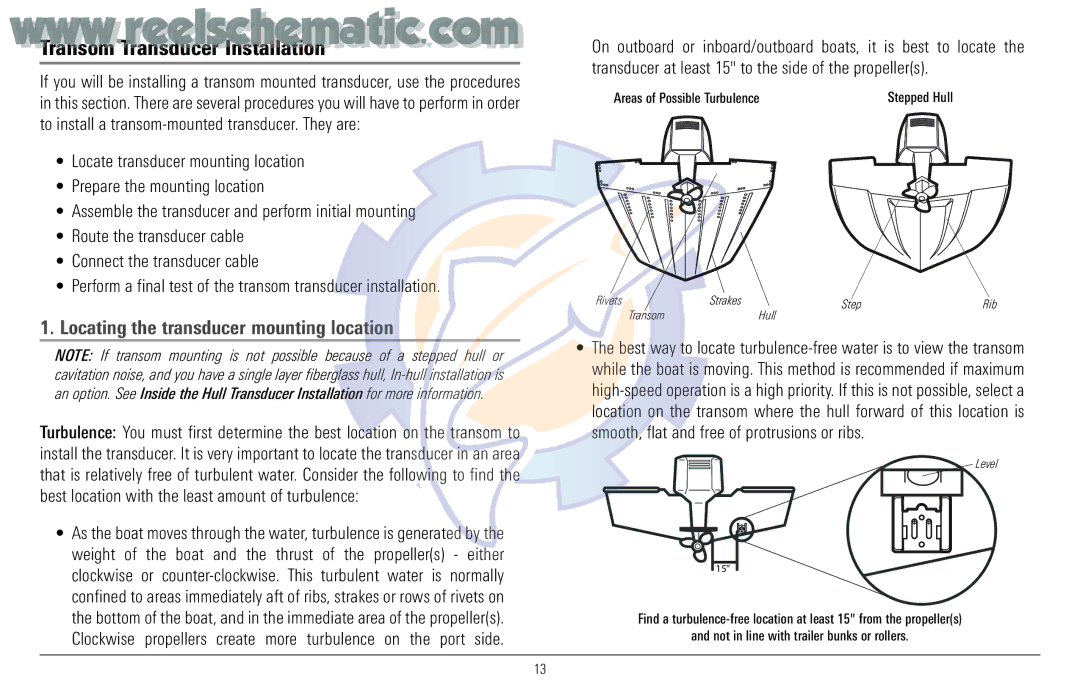
www..reelschel matic..com
Transom Transducer Installation
If you will be installing a transom mounted transducer, use the procedures in this section. There are several procedures you will have to perform in order to install a
•Locate transducer mounting location
•Prepare the mounting location
•Assemble the transducer and perform initial mounting
•Route the transducer cable
•Connect the transducer cable
•Perform a final test of the transom transducer installation.
1.Locating the transducer mounting location
NOTE: If transom mounting is not possible because of a stepped hull or cavitation noise, and you have a single layer fiberglass hull,
Turbulence: You must first determine the best location on the transom to install the transducer. It is very important to locate the transducer in an area that is relatively free of turbulent water. Consider the following to find the best location with the least amount of turbulence:
•As the boat moves through the water, turbulence is generated by the weight of the boat and the thrust of the propeller(s) - either clockwise or
On outboard or inboard/outboard boats, it is best to locate the transducer at least 15" to the side of the propeller(s).
Areas of Possible Turbulence | Stepped Hull | ||||
|
|
|
|
|
|
|
|
|
|
|
|
Rivets | Strakes | Step | Rib |
Transom |
| Hull |
|
•The best way to locate
Level
15”
Find a
and not in line with trailer bunks or rollers.
13
